Keeping a garden journal seemed like a simple idea—but after a year, it transformed the way I garden. What started as a few notes about planting dates and weather patterns evolved into a powerful tool for understanding my plants, soil, and even myself.
By tracking successes, failures, and unexpected patterns, I uncovered insights I would’ve otherwise missed—like which plants truly thrived in certain spots, how microclimates affected growth, and when pests were most active. The journal became my personal gardening guide.
In this article, I’ll share what my garden journal taught me after one year—and why you might want to start one of your own.
Seasonal Planting

During my first spring of journaling, timing was everything. Each seed planted at the right moment resulted in a flourishing bed of blooms. Observing these cycles taught me patience and timing’s importance.
Summer’s heat revealed which plants could withstand the sun’s blaze and which required shade. Autumn introduced a palette of warm hues as leaves transformed, and winter’s chill tested their endurance.
Understanding each season’s unique demands enabled strategic planting. From seed to sprout, the journal became a guide, ensuring the garden thrived year-round.
Pest Management
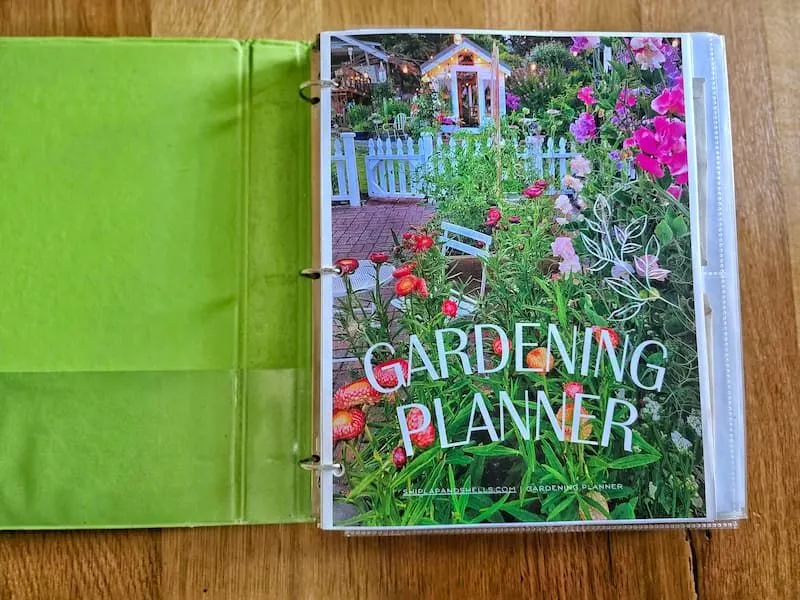
Early encounters with pests turned into a battle of wills. Observing aphids and caterpillars wreak havoc pushed me to explore natural remedies.
By introducing ladybugs and birds, I witnessed a remarkable change. The balance between predator and prey not only saved my plants but also enriched the garden’s ecosystem.
Documenting these interactions highlighted the importance of eco-friendly pest control. The journal chronicled these battles, offering solutions that were both effective and sustainable.
Soil Health
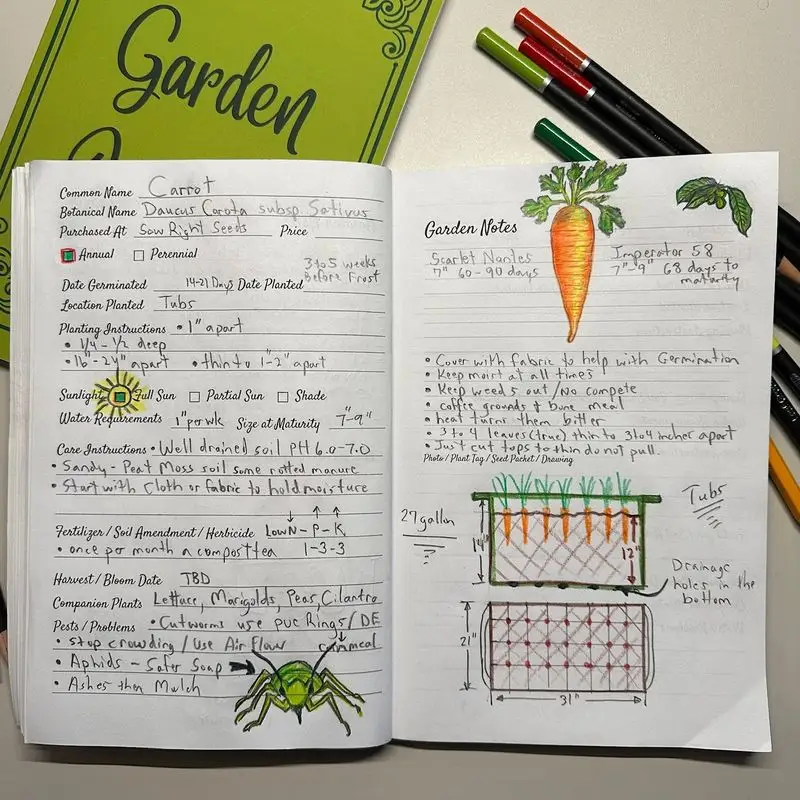
Unearthing the secrets beneath the surface began with a simple soil test. Each analysis revealed the soil’s nutrient profile, guiding amendments for healthier growth.
Composting emerged as a key player, transforming kitchen scraps into black gold. This organic matter enriched the soil, fostering a robust root system.
The journal documented these findings, emphasizing soil as the garden’s foundation. Understanding its composition was crucial for cultivating vibrant life above ground.
Companion Planting
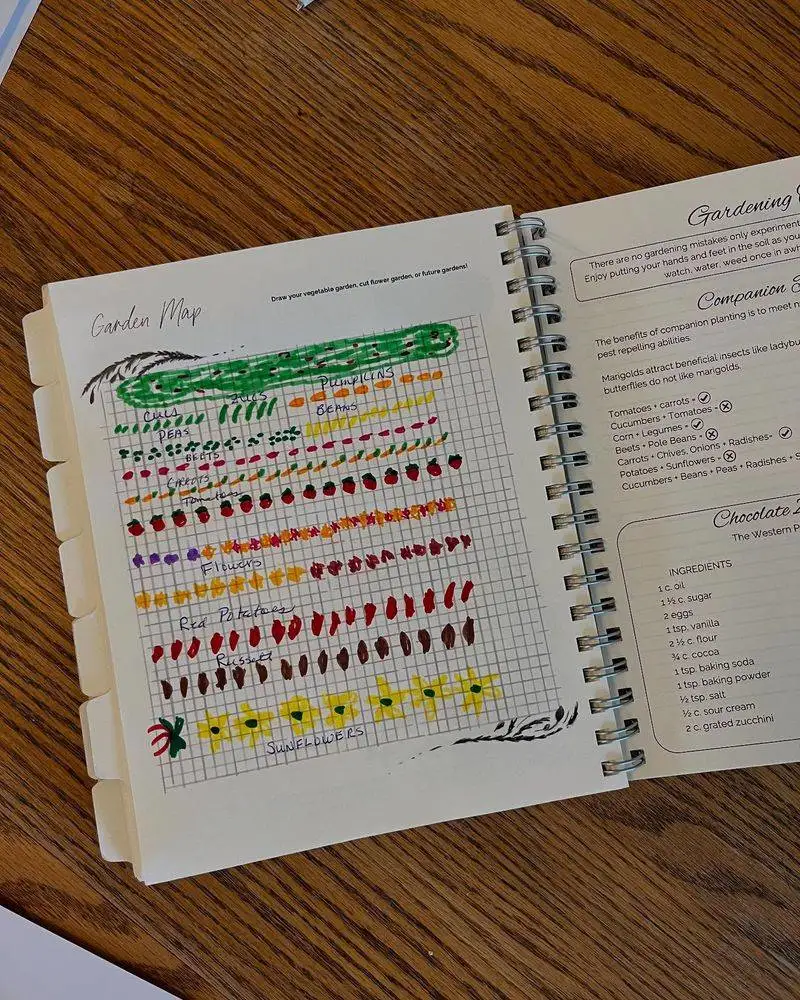
An unexpected friendship formed between tomatoes and basil. This pairing deterred pests and enhanced flavors, a discovery born from journal observations.
Marigolds, with their vibrant blooms, protected vegetables by warding off nematodes. Their presence not only beautified the garden but also became a natural pest deterrent.
The notes revealed how strategic plant partnerships boosted productivity and minimized chemical use. Companion planting turned the garden into a symbiotic haven.
Watering Techniques

Navigating the art of watering proved vital. Drip irrigation systems transformed the process, delivering water directly to roots and conserving resources.
Hand-watering became a mindful exercise, allowing me to gauge each plant’s needs. A rain gauge offered insights into natural contributions, reducing wasteful practices.
The journal’s entries underscored the importance of tailored watering techniques. Adapting to each plant’s thirst ensured their survival and thrived growth.
Biodiversity

Creating a tapestry of life required a mix of flora. Each addition, from herbs to wildflowers, attracted pollinators and promoted a thriving habitat.
The garden evolved into a sanctuary for bees, butterflies, and birds, each playing a role in its health. Their presence was a testament to the power of biodiversity.
Entries reflected how diverse plant life bolstered resilience and enhanced aesthetics. This vibrant ecosystem exemplified the garden’s harmonious balance.
Crop Rotation
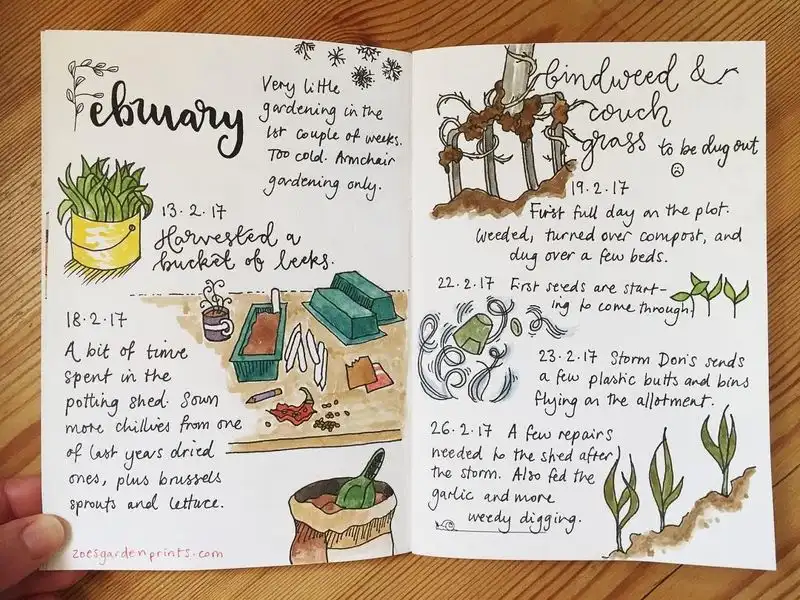
Rotating crops annually broke disease cycles and improved soil fertility. The journal became a map, guiding these strategic shifts.
Each season brought a new arrangement, preventing nutrient depletion. The diversity of crops ensured soil remained fertile and reduced pest outbreaks.
This rotational dance was pivotal for sustainable gardening. The entries captured each season’s layout, ensuring a dynamic and ever-evolving garden.
Climate Adaptation
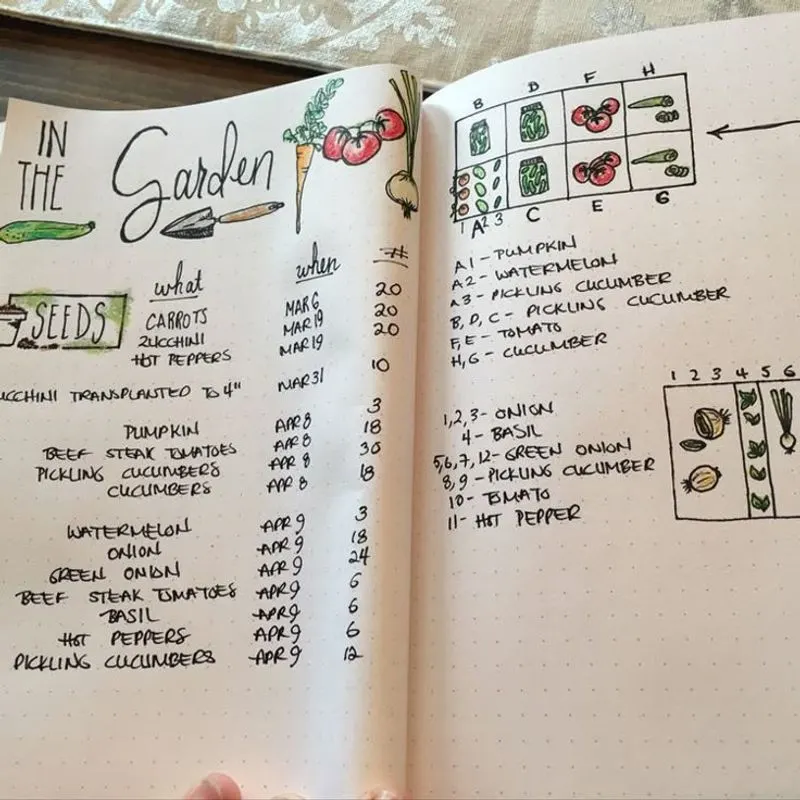
Adapting to climate nuances was a learning curve. Choosing drought-resistant plants ensured survival during dry spells, while implementing shade structures protected delicate species from harsh sun.
The journal documented local weather patterns, guiding plant selections that thrived in these conditions. It was a testament to resilience and adaptability.
Each entry contributed to a garden that mirrored its environment, showcasing a perfect blend of nature’s offerings and human ingenuity.
Harvesting Strategies

Timing the harvest was an art. Picking fruits and vegetables at peak ripeness ensured the best flavors and prolonged shelf life.
Staggered planting schedules resulted in continuous yields, reducing waste and maintaining fresh produce availability. The journal offered a timeline for optimal collection.
These strategies optimized both quality and quantity. Each entry served as a reminder of the rewards patience and precision bring to the gardening process.
Personal Reflection

Beyond the tangible lessons, the journal captured personal growth. Each entry was a moment of reflection, offering insights beyond gardening.
The act of writing transformed challenges into learning experiences, and successes into cherished memories. It was a journey of self-discovery intertwined with nature’s rhythms.
The garden became a mirror of life, where both flourished through attention and care. These reflections offered a glimpse of the profound impact a simple journal could have.

